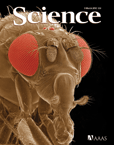 The connection between gut bacteria and obesity has gained some weight, with new findings demonstrating links in mice among immune-system malfunction, bacterial imbalance and increased appetite.[1]
The connection between gut bacteria and obesity has gained some weight, with new findings demonstrating links in mice among immune-system malfunction, bacterial imbalance and increased appetite.[1]
Mice with altered immune systems developed metabolic disorders and were prone to overeating. When microbes from their stomachs were transplanted into other mice, they also become obese. These latest findings add weight to the growing appreciation about the role of the bacteria in and on our bodies. We are all outnumbered in terms of human versus bacterial cells and the concept of human and bacteria symbiosis as a super-organism is gaining traction.
Already there have been strong associations between asthma, some cancers, autoimmune conditions and unwanted weight gain.
Gut flora have also been linked to obesity. In 2006, researchers led by Washington University microbiologist Jeffrey Gordon documented bacterial changes in the stomachs of mice who became obese on high-fat diets. Michael Ash wrote a review article in CAM magazine on this subject back in 2005 and it can be read in our review section.
This paper discusses a serendipitous discovery concerning metabolic syndrome, a western world problem leading to hyperglycaemia, hyperlidemia, insulin resistance, obesity and liver steatosis.[2]
This is thought mainly due to dietary changes and reduction in exercise that in turn contributes to inflammation and loss of insulin sensitivity. This paper explores the role that gut bacteria may have in contributing to this, in particular the firmicutes and bacteroidites.[3][4]
Our results suggest that the specific composition of microbiota to which individuals are first exposed may be an important means by which early environment exerts a lasting influence on metabolic phenotype. They also suggest that the excess caloric consumption driving the current epidemic of metabolic syndrome may be caused, at least in part, by alterations in host-microbiota interactions.
The gut microbiota is shaped by both environment and host genetics with the innate immune system in particular, long-appreciated for its role in defending against infection by pathogenic microbes, now suggested to play a key role in regulating the gut microbiota.[5] Thus, in addition to its role in infection/inflammation, innate immunity may play a key role in promoting metabolic health. One of the mucosal immune proteins that seems to be developing an important role in this balance is SIgA.
Comment
An explanation for some of the changes in gut microbiota is founded in the hygiene theory, and the almost ubiquitous presence of antibiotics both as prescribed medication and present in the environment may be partly to blame. We know that a single course is able to disrupt bacterial colonies for up to 6 months. It may be a secondary effect of antibiotic use, that metabolic syndrome and obesity are developing in medicalised countries.
There may also be relevance in terms of the introductory bacteria that each human is exposed to from in utero[6],[7] and ex utero experiences. If the mothers bacteria are supporting her obesity, then the transfer of this microbial species may also contribute to difficulty in managing weight in the child through to adult hood.
References
[1] Matam Vijay-Kumar, Jesse D. Aitken, Frederic A. Carvalho, Tyler C. Cullender, Simon Mwangi, Shanthi Srinivasan, Shanthi V. Sitaraman, Rob Knight, Ruth E. Ley, Andrew T. Gewirtz. Metabolic Syndrome and Altered Gut Microbiota in Mice Lacking Toll-Like Receptor-5Science, Vol. 327, No. 5970, March 4, 2010. View Abstract
[2] Wang Y, Beydoun MA, Liang L, Caballero B, Kumanyika SK. Will all Americans become overweight or obese? estimating the progression and cost of the US obesity epidemic. Obesity (Silver Spring). 2008 Oct;16(10):2323-30. Epub 2008 Jul 24. View Abstract
[3] Wexler HM. Bacteroides: the good, the bad, and the nitty-gritty. Clin Microbiol Rev. 2007 Oct;20(4):593-621. View Abstract
[4] Mahowald MA, Rey FE, Seedorf H, Turnbaugh PJ, Fulton RS, Wollam A, Shah N, Wang
C, Magrini V, Wilson RK, Cantarel BL, Coutinho PM, Henrissat B, Crock LW, Russell
A, Verberkmoes NC, Hettich RL, Gordon JI. Characterizing a model human gut microbiota composed of members of its two dominant bacterial phyla. Proc Natl Acad Sci U S A. 2009 Apr 7;106(14):5859-64. Epub 2009 Mar 24. View Abstract
[5] Slack E, Hapfelmeier S, Stecher B, Velykoredko Y, Stoel M, Lawson MA, Geuking MB, Beutler B, Tedder TF, Hardt WD, Bercik P, Verdu EF, McCoy KD, Macpherson AJ. Innate and adaptive immunity cooperate flexibly to maintain host-microbiota mutualism. Science. 2009 Jul 31;325(5940):617-20. View Abstract
[6] Jiménez E, Fernández L, Marín ML, Martín R, Odriozola JM, Nueno-Palop C, Narbad A, Olivares M, Xaus J, Rodríguez JM. Isolation of commensal bacteria from umbilical cord blood of healthy neonates born by cesarean section. Curr Microbiol. 2005 Oct;51(4):270-4. Epub 2005 Sep 20. View Abstract
[7] Jiménez E, Marín ML, Martín R, Odriozola JM, Olivares M, Xaus J, Fernández L, Rodríguez JM. Is meconium from healthy newborns actually sterile? Res Microbiol. 2008 Apr;159(3):187-93. Epub 2008 Jan 11. View Abstract




